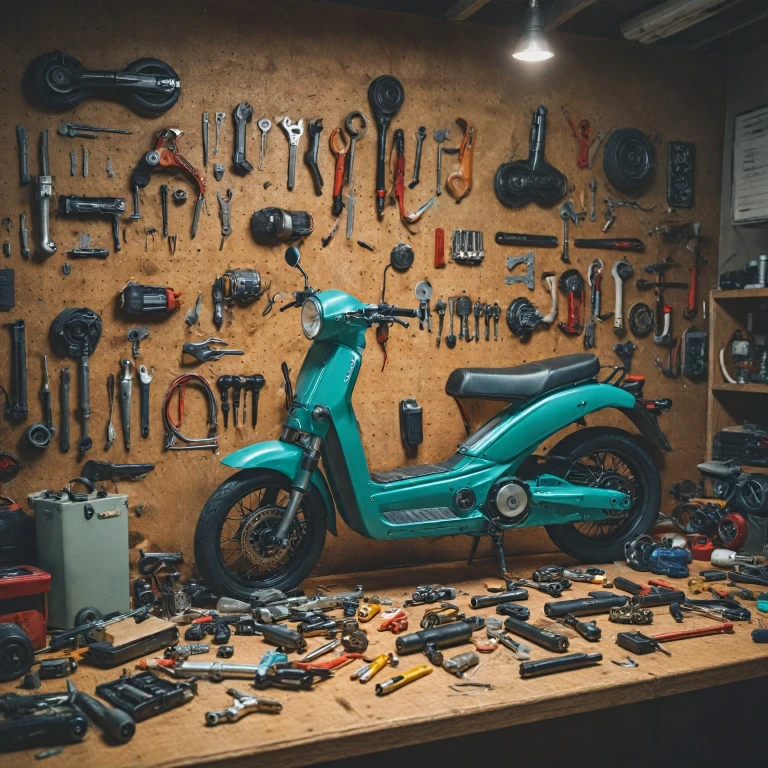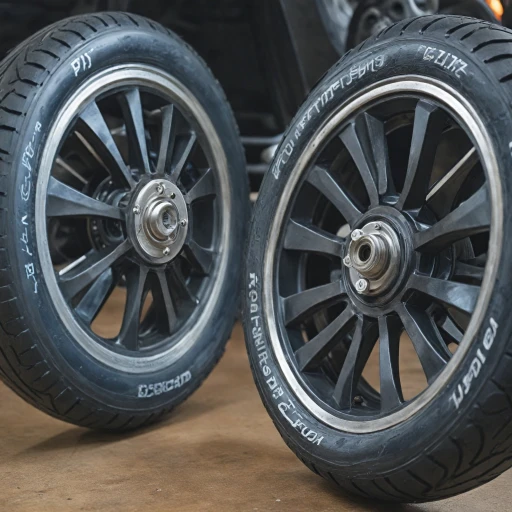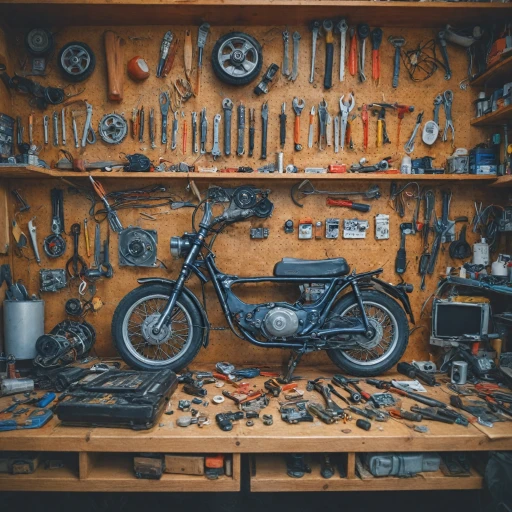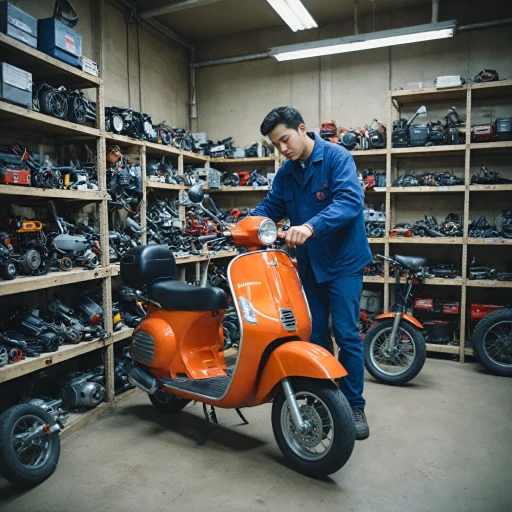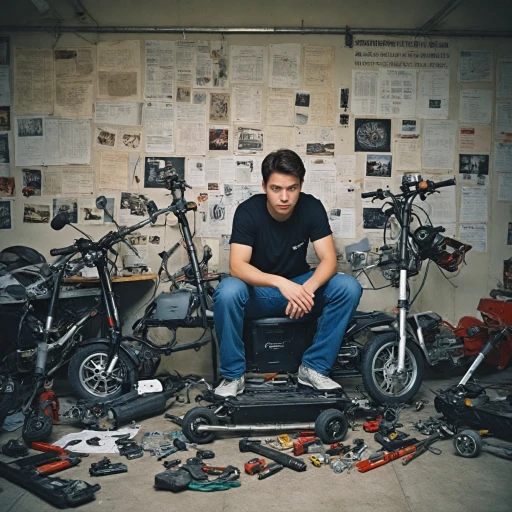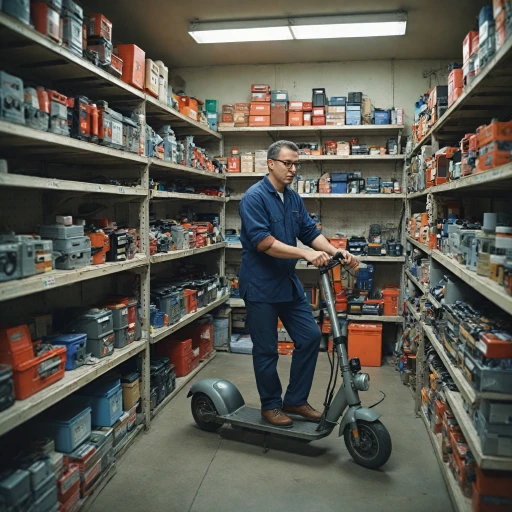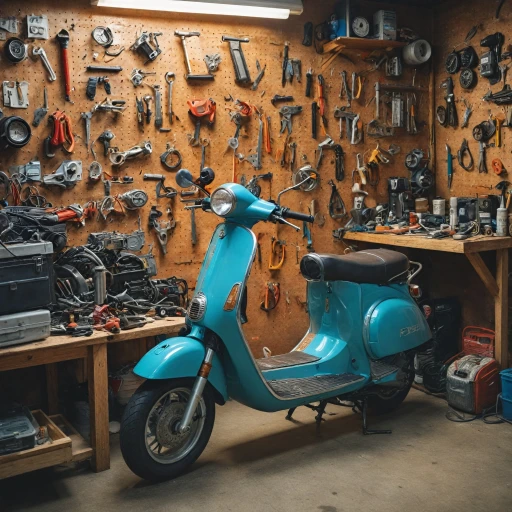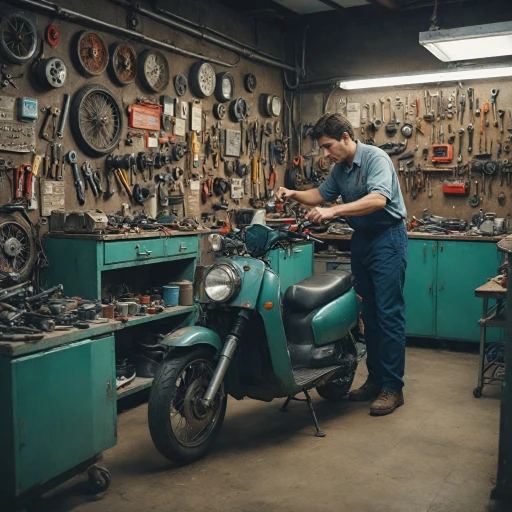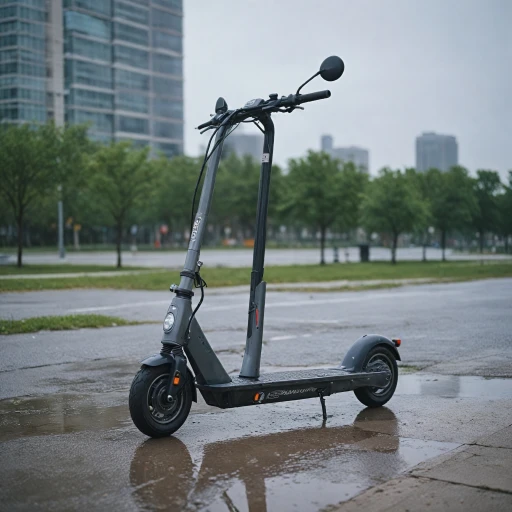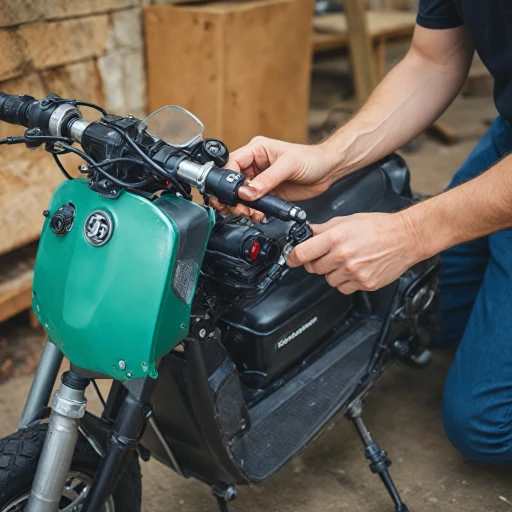
Common Issues in Electric Scooters
Typical Problems Facing Electric Scooter Owners
Owning an electric scooter comes with its set of challenges, especially when it comes to identifying and resolving common issues. Understanding these problems can save you time and trips to the repair shop. Here are some of the recurring obstacles electric scooter users often encounter:- Battery Troubles: Your electric scooter's lithium battery is a crucial component. Problems such as a rapid drain, inability to hold charge, or complete battery failure can occur without proper scooter maintenance. Regular battery repair services are essential to keep your ride running smoothly.
- Motor Malfunctions: Motors can experience wear and tear over time. Electric scooters might start slowing down or making unusual noises, indicating issues that might need an immediate look-over. In severe cases, a motor replacement might be necessary.
- Braking System Issues: The braking system must be in top condition to ensure safety. If you notice reduced braking efficiency or hear screeches, it’s time for an adjustment or part replacement. Frequent inspections can prevent these issues from escalating.
- Tire Wear and Tear: Scooters, like any bike or vehicle, face tire problems. From punctures to tire degradation, it’s important to examine your tires regularly. Repair services can offer solutions like patching punctures or complete tire replacements.
Tools and Equipment for DIY Repairs
Essential Tools for Electric Scooter Repairs
When it comes to maintaining your electric scooter, having the right tools and equipment is crucial. Whether you're dealing with common issues or more complex problems, a well-stocked toolkit can make all the difference. Here’s a rundown of what you need to get started on your DIY repair journey.
Basic Tools You Should Have
- Screwdrivers: Both flathead and Phillips screwdrivers are essential for accessing various parts of your scooter.
- Allen Wrenches: These are crucial for adjusting and tightening bolts, especially in the brake system and motor areas.
- Wrench Set: A set of adjustable wrenches will help you handle different sizes of nuts and bolts.
- Pliers: Needle-nose pliers are particularly useful for gripping small parts and wires.
- Tire Levers: These are essential for changing or repairing tires on your scooter bike.
Advanced Equipment for In-Depth Repairs
- Multimeter: This tool is indispensable for diagnosing electrical issues, such as battery and motor problems.
- Soldering Kit: Useful for repairing or replacing damaged wires and connectors.
- Torque Wrench: Ensures that bolts are tightened to the manufacturer’s specifications, preventing over-tightening.
- Battery Charger: A good quality charger is essential for maintaining your lithium battery's health.
Safety Gear for Repair Work
- Gloves: Protect your hands from sharp parts and electrical components.
- Safety Glasses: Essential for protecting your eyes during repairs.
- Work Apron: Keeps your clothes clean and offers some protection against minor spills and debris.
Having these tools and equipment on hand will prepare you for most repair services you might need to perform on your electric scooter. Remember, while DIY repairs can be rewarding, knowing when to seek professional help is crucial to avoid further damage. If you're ever in doubt, don't hesitate to contact a repair shop or service center for assistance.
Step-by-Step Guide to Battery Maintenance
Battery Maintenance
A key component of keeping your electric scooter running smoothly is ensuring proper battery maintenance. Regular care and inspection can help prevent outages and extend the life of the battery, which is crucial for maintaining an eco-friendly mode of transport.
1. Understanding Your Battery
Your electric scooter likely uses a lithium battery, known for its longevity and efficiency. However, these batteries require specific care. Consulting your scooter’s manual is the best way to understand the battery’s specifications and recommended practices. Moreover, international service centers offer a wealth of information regarding battery types and maintenance tips.
2. Routine Inspection
Before you start any maintenance, do a thorough inspection of both the battery and its compartment. Look for any signs of corrosion, loose connections, or physical damage. Regular checks can prevent common issues that lead to more serious problems.
3. Cleaning and Care
A clean battery is vital for its performance. Gently clean any dust or grime with a cloth and ensure the terminals are free of any dirt or corrosion. In some cases, benign neglect might necessitate more detailed cleaning, especially if the scooter is frequently used in adverse conditions.
4. Charging Practices
Proper charging is crucial for battery longevity. Avoid letting the battery drain completely; instead, aim to recharge it when it is about 20-30% full. Similarly, refrain from overcharging by disconnecting the charger once full charge is reached. Keeping a regular charging schedule can significantly enhance battery life.
5. Temperature Considerations
Extreme temperatures can adversely affect battery health. Store and operate your electric scooter in moderate conditions to avoid unnecessary strain on the battery. If you live in a region prone to temperature extremes, you may need to implement additional safeguards.
If you encounter severe battery problems that you can't handle, it's advisable to make an appointment with a professional technician who can offer precise battery repair services.
Adhering to these practices not only extends the life of your battery but ensures that every ride is as efficient as possible, promoting a sustainable and enjoyable electric scooter or bike experience. Remember, responsible maintenance not only keeps your scooter in top-notch condition but also contributes to your overall safety. For more on staying safe while riding, check out the importance of helmets with electric scooters.
Troubleshooting Electric Scooter Motors
Diagnosing Motor Problems
Electric scooter motors are the heart of your ride, and when they falter, it can be frustrating. Understanding the common issues that affect motors is crucial for effective troubleshooting. Often, problems arise from wear and tear, improper maintenance, or electrical faults. Here’s how you can start diagnosing motor issues:
- Check for Unusual Noises: Grinding or clicking sounds can indicate worn-out parts or debris caught in the motor.
- Inspect Wiring: Loose or damaged wires can disrupt the motor's function. Ensure all connections are secure.
- Test the Throttle: A faulty throttle can mimic motor issues. Verify that the throttle is responsive and properly connected.
Basic Motor Repair Steps
Once you’ve identified potential issues, you can proceed with basic repair steps. Remember, safety first: disconnect the battery before starting any repairs.
- Clean the Motor: Remove any debris or dirt that may have accumulated. This can often resolve minor issues.
- Tighten Loose Parts: Check for any loose screws or bolts and tighten them to prevent further damage.
- Replace Worn Parts: If you notice any damaged components, consider replacing them. Having spare parts on hand can save time.
When to Consider Professional Services
While DIY repairs can resolve many issues, some problems require professional expertise. If your scooter’s motor continues to malfunction despite your efforts, it might be time to visit a repair shop. Professional technicians offer top-notch repair services and can handle complex issues that might be beyond your skill level. Additionally, they can provide a thorough assessment and recommend whether a replacement is necessary.
For those in specific regions, such as San Francisco or Florida, finding a reliable repair service can ensure your scooter is back on the road quickly. Regular maintenance and timely repairs can extend the life of your electric scooter, keeping it eco-friendly and efficient.
Brake System Adjustments and Repairs
Optimizing Brake Functionality
Attending to your electric scooter's brake system is crucial for safety and performance. Over time, regular use can lead to brake issues, and understanding when to service them can prevent more complicated repairs in the future. Here's a look at how you can adjust and repair your scooter's brakes. Start by identifying the type of brake system on your scooter. Whether it's drum, disc, or regenerative brakes, knowing the mechanism is essential to carrying out effective repairs. Regular checks and maintenance can enhance your bike scooter experience and ensure a smoother ride.Ensuring Proper Brake Adjustment
Brake adjustments are a common necessity among electric scooters. If you notice a decrease in stopping power, it may be time for an adjustment. Here's a simple guide to doing this:- Locate the Brake Lever Adjustment Barrel: This part is usually found near the handlebar. Adjusting it can help tighten or loosen the brake cable.
- Adjust Brake Cable Tension: If the brakes feel loose, tighten the cable. If they're too tight and the wheel doesn't spin freely, loosen it slightly.
- Test Brakes Carefully: After each adjustment, test your scooter in a safe environment to ensure the brakes apply smoothly and effectively.
Repair and Replacement of Brake Parts
Over time, wear and tear can necessitate the replacement of certain brake components. From brake pads to rotors, sourcing the right parts is crucial.- Identify Worn-Out Components: Check for signs of wear, such as thinning brake pads or warped rotors.
- Seek Quality Replacement Parts: Obtain parts from reputable shops or directly from the manufacturer to ensure compatibility and safety.
When to Seek Professional Help
Recognizing When Professional Assistance is Necessary
Though tackling some scooter repairs on your own can be satisfying, various situations may require the expertise of a professional repair service. Addressing issues beyond daily maintenance demands awareness of certain signs that suggest it's time to rely on skilled technicians.- Persistent Motor Issues: If you've tried troubleshooting your electric scooter's motor and still encounter problems, it's time to consult with an expert. A professional knows the intricacies of motors and can assess whether it needs replacement or repair.
- Complex Battery Repairs: Simple battery maintenance is doable at home, but more involved tasks should be left to professionals. Lithium batteries in electric scooters require precise attention to prevent damage.
- Brake System Complications: While minor brake adjustments can be handled without specialized help, significant issues or replacements should always be managed by a repair shop.
- Unusual Noises: Consistent strange noises that persist post-basic fixes may signal deeper, hidden problems. Skilled technicians have the experience to diagnose and solve such complexities.
- Lack of Tools and Knowledge: If you find yourself missing essential tools or lacking the expertise to advance your repair task, it's a good indicator to seek professional help.
- Warranty Considerations: Attempting any significant repair could void warranties. It's advisable to verify your scooter’s warranty details and opt for professional services if needed.
